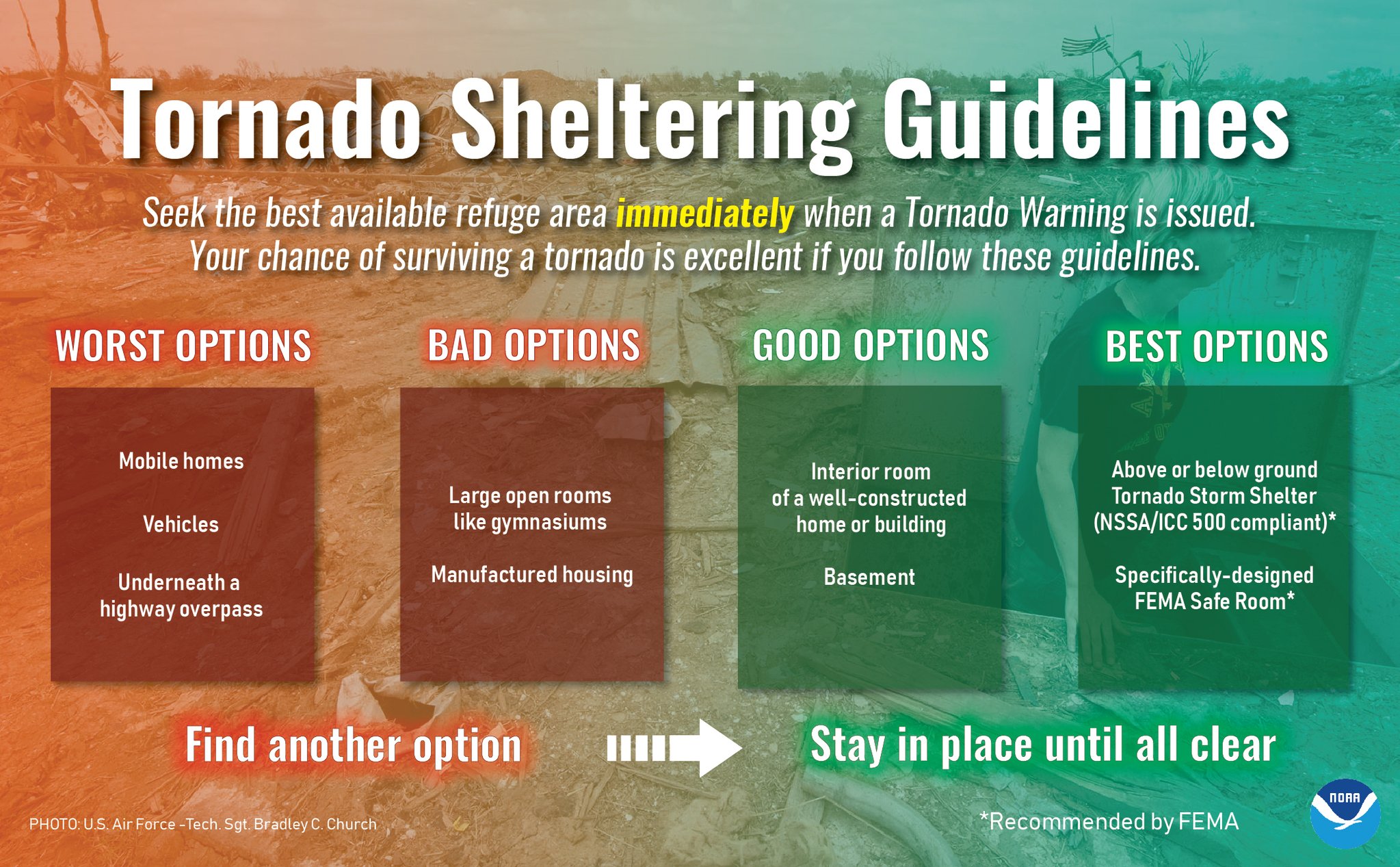Staying Safe During Floods: Your Guide To Severe Weather Awareness Week

Table of Contents
Understanding Flood Risks
Knowing your risk is the first step in flood preparedness. Many factors contribute to flood risk, and understanding these will help you make informed decisions to protect yourself and your family.
Identifying Flood-Prone Areas:
Determining your flood risk involves understanding your environment and accessing relevant information. Use online tools and local resources to assess your vulnerability.
- Check FEMA flood maps: The Federal Emergency Management Agency (FEMA) provides detailed flood maps for the United States. These maps show areas with varying flood risks, helping you determine your property's susceptibility.
- Consult local emergency management websites: Your city or county's emergency management agency website offers valuable local information on flood risks, historical flood data, and evacuation plans.
- Look for historical flood data in your area: Research past flood events in your area. Local news archives, historical society records, and government websites can provide insights into flood frequency and severity.
- Observe geographical features: Pay attention to your surroundings. Proximity to rivers, streams, creeks, low-lying areas, and poor drainage systems increases your flood risk.
Recognizing Flood Warning Signs:
Early warning is critical for effective flood preparedness. Learning to recognize the signs of an impending flood will allow you to take timely action.
- Pay attention to weather forecasts and warnings: Monitor weather reports closely, especially during periods of heavy rainfall or storms. Heed all official warnings and advisories issued by the National Weather Service.
- Monitor river and stream levels: Regularly check river and stream gauges in your area to track water levels. Rapid rises indicate a potential flood threat.
- Note unusual changes in water flow or drainage: Observe changes in water flow patterns, such as unusually fast-moving water or overflowing drains and culverts.
- Be aware of saturated ground and overflowing drains: Saturated ground indicates that the soil cannot absorb more water, increasing the risk of surface flooding.
Preparing for a Flood
Preparation is paramount to staying safe during floods. Developing a comprehensive plan and assembling an emergency kit are essential steps.
Developing a Family Emergency Plan:
Creating a detailed emergency plan ensures everyone knows what to do in a flood emergency. This plan should include:
- Identify safe evacuation routes: Plan multiple escape routes from your home, considering potential road closures due to flooding.
- Designate a meeting place outside the flood zone: Choose a meeting point outside the flood-affected area where your family can reunite after evacuation.
- Establish communication methods: Determine how family members will contact each other during and after the flood, considering potential disruptions to phone service. Consider text messages, pre-arranged check-in times, or a designated out-of-area contact.
- Pack an emergency kit (see below): Prepare a comprehensive kit with essential supplies to sustain your family for several days.
Assembling an Emergency Kit:
Your emergency kit should include essential supplies to support your family's needs during and after a flood. Ensure the kit is easily accessible and well-organized.
- Water: Store at least one gallon of water per person per day for several days.
- Non-perishable food: Include canned goods, energy bars, and other non-perishable items with a long shelf life.
- First-aid kit: A well-stocked kit with bandages, antiseptic wipes, pain relievers, and any necessary prescription medications.
- Flashlight and extra batteries: Provide light during power outages.
- Radio (hand-crank or battery-powered): Stay informed about emergency broadcasts.
- Medications: Include any prescription medications and over-the-counter medicines your family may need.
- Important documents (waterproof container): Store vital documents, such as identification, insurance policies, and medical records, in a waterproof container.
- Extra clothing: Pack warm and dry clothing suitable for various weather conditions.
Protecting Your Property:
Taking proactive steps to protect your property can minimize flood damage.
- Elevate valuables and important documents: Store important items on higher shelves or in waterproof containers to prevent water damage.
- Install flood barriers or sandbags (if advised by officials): If advised by local authorities, install flood barriers or sandbags around your property to help divert floodwaters.
- Disconnect electrical appliances before evacuating: Disconnect power to appliances to prevent electrical shocks and damage.
- Secure loose outdoor items that could be swept away: Secure loose objects such as furniture, garbage cans, and yard debris to prevent them from being swept away by floodwaters.
Actions to Take During a Flood
During a flood, prioritizing safety is paramount. Follow instructions from authorities and take necessary precautions.
Evacuation Procedures:
Evacuation is crucial when instructed by officials. Never underestimate the power of floodwaters.
- Leave immediately if instructed to evacuate: Obey evacuation orders promptly. Delays can be life-threatening.
- Never drive through floodwaters: Floodwaters can be deeper and faster than they appear, and driving through them is extremely dangerous.
- Use designated evacuation routes: Follow designated evacuation routes to avoid hazardous areas.
- Seek higher ground if you cannot evacuate: If evacuation is not possible, move to higher ground within your home or find a safe, elevated location.
Staying Safe During a Flood:
Avoid contact with floodwaters and prioritize your safety.
- Avoid driving or walking through floodwaters – they can be deeper and faster than they appear: Floodwaters may contain hidden debris, strong currents, and contaminants, posing significant risks.
- Watch out for downed power lines: Downed power lines pose a severe electrical hazard; stay away from them and report them immediately.
- Be aware of debris in floodwaters: Floodwaters often carry debris such as sharp objects, chemicals, and sewage.
- Report any unsafe conditions to emergency services: Immediately report any unsafe conditions, such as downed power lines or structural damage, to your local emergency services.
Conclusion
This Severe Weather Awareness Week, make flood preparedness a priority. By understanding flood risks, preparing a plan, and taking appropriate action during a flood, you can significantly increase your chances of staying safe during floods. Remember, early preparation and adherence to safety guidelines are key to minimizing the impact of flooding on you and your loved ones. Take action today; review your family's flood safety plan and ensure your emergency kit is up-to-date. Don't wait – staying safe during floods starts now!

Featured Posts
-
 16 Million Fine For T Mobile Three Year Data Breach Settlement
May 25, 2025
16 Million Fine For T Mobile Three Year Data Breach Settlement
May 25, 2025 -
 Krasivaya Data 89 Svadeb Na Kharkovschine
May 25, 2025
Krasivaya Data 89 Svadeb Na Kharkovschine
May 25, 2025 -
 Trump Vs Europe Deconstructing The Trade Tensions
May 25, 2025
Trump Vs Europe Deconstructing The Trade Tensions
May 25, 2025 -
 Deciphering The Hells Angels An Examination Of Their Organization
May 25, 2025
Deciphering The Hells Angels An Examination Of Their Organization
May 25, 2025 -
 Understanding The I O Io Debate Google And Open Ais Tech Rivalry
May 25, 2025
Understanding The I O Io Debate Google And Open Ais Tech Rivalry
May 25, 2025
Latest Posts
-
 Humoriste Transformiste Zize Soiree Marseillaise A Graveson Le 4 Avril
May 25, 2025
Humoriste Transformiste Zize Soiree Marseillaise A Graveson Le 4 Avril
May 25, 2025 -
 Ardisson Raconte Soirees Dejantees Et Anecdotes Croustillantes
May 25, 2025
Ardisson Raconte Soirees Dejantees Et Anecdotes Croustillantes
May 25, 2025 -
 Zize En Spectacle A Graveson Humoriste Transformiste Marseillais 4 Avril
May 25, 2025
Zize En Spectacle A Graveson Humoriste Transformiste Marseillais 4 Avril
May 25, 2025 -
 L Animateur Ardisson Repond Aux Critiques De Son Ancien Sniper Baffie
May 25, 2025
L Animateur Ardisson Repond Aux Critiques De Son Ancien Sniper Baffie
May 25, 2025 -
 Spectacle De Zize Humoriste Transformiste A Graveson 4 Avril
May 25, 2025
Spectacle De Zize Humoriste Transformiste A Graveson 4 Avril
May 25, 2025
